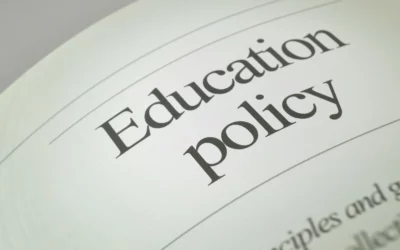
Written by The Likely Voter
November 9, 2023
![]()
In a recent Insights article, Bill Duncan, Sutherland Institute’s constitutional law and religious freedom policy fellow, wrote about the Supreme Court’s 2023-24 term and important cases regarding freedom of speech on its docket.
Since the nation’s founding, freedom of speech has been at the core of the American ideal. What began with broad principles, like allowing citizens to criticize government officials or preach in the public square, has evolved into more detailed protections, like which messages people have on their car license plate.
As free speech conflicts appear in the news, like lawsuits against social media companies or Supreme Court rulings on which business services count as free speech, it’s important to understand how the court evaluates such cases.
Though the themes of free speech cases have changed over the years, the framework on how the cases are decided remains the same.
“In the past, the major issues were whether someone had the right to criticize in a newspaper or go speak in a public hearing,” Duncan said in a recent interview. “Now the government has more regulations of things we do, whether we discriminate against an employee or how we go about doing our business.”
Duncan said that there are three steps in how the court evaluates a free speech case and works to develop its decision.
How is the government causing burden?
Duncan noted that the court’s first evaluation of a case is determining whether the government’s actions are causing a burden to the speech.
“If I send an opinion letter that criticizes my local paper and they don’t run it, I don’t have a claim,” Duncan said. Without the government playing a role, Duncan explained, then “it’s just the marketplace of ideas.”
What was the time, place and manner?
How, when and where people engage in speech matters. For example, individuals have the right to protest, but “doing so in the middle of the freeway is not allowed,” Duncan said.
Similarly, speaking out against a government official is okay, but calling for injury or physical harm to that official is not.
Is there justification for the burden?
The government can put some “burdens” on the expression of speech, Duncan said, if it’s reasonable and necessary for another public interest. A good example is if a group is staging a march through a community, the government reserves the right to regulate the marchers to allow things such as traffic flows to function properly. This could include requiring a permit or allowing only a specific timeslot to perform the march.
Public debates about free speech – and how the courts respond – can certainly be contentious. But having a better understanding of the principled framework and the duty to focus on the Constitution and the law, that guide the Supreme Court’s approach, will better equip Americans as they discuss this bedrock principle of our country.

For a more in-depth perspective on this article, read our Insights piece here.
Takeaways: the most important things voters need to know. For civically engaged citizens.

- The courts take three steps in evaluating every free speech case before making a decision.
- Free speech in America has broad protections, except in rare circumstances like inciting violence.
- Understanding how the court decides cases on free speech is an important factor in avoiding contention in public debate.
More Insights
Read More
What’s happening with education choice policy?
There’s movement on a federal scholarship tax credit while more states adopt private school choice policies.
Trump’s tariffs: path to working-class prosperity, or protectionist misstep?
Defenders argue tariffs will restore manufacturing jobs, while critics say they amount to a tax on Americans with little real benefit. Experts from both sides weigh in.
Congress should follow Utah’s lead on protecting kids online with app store law
A new bill to regulate app stores has been introduced in Congress.



